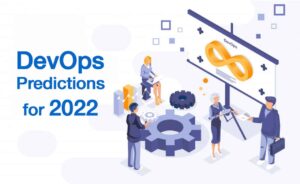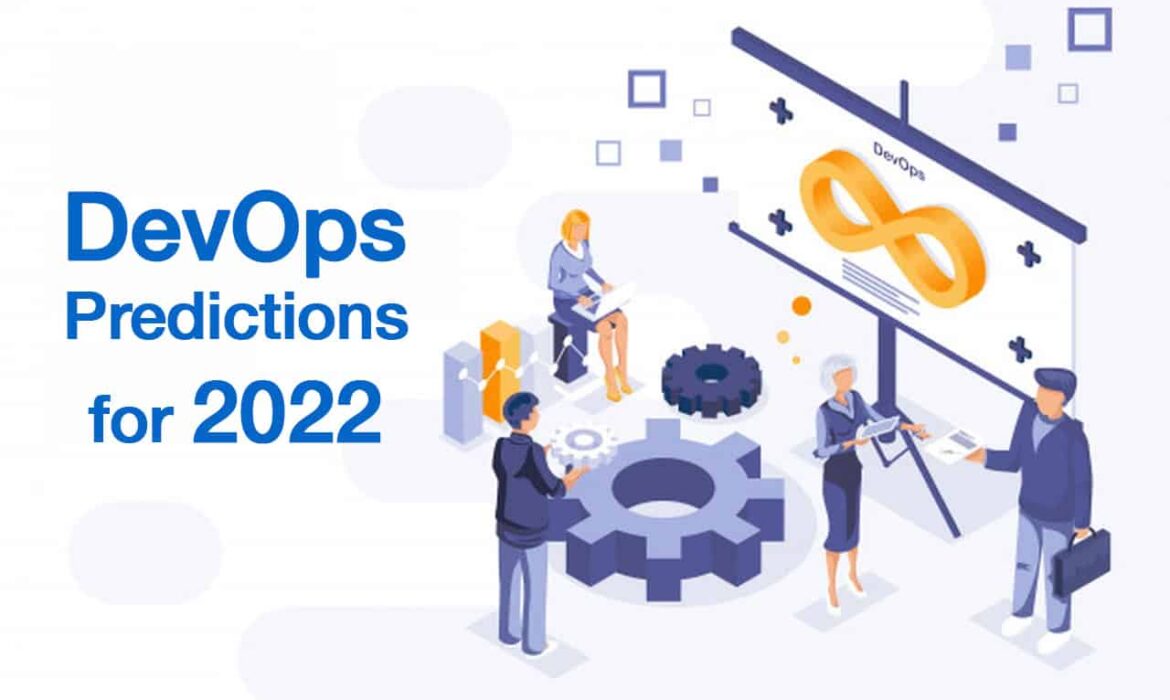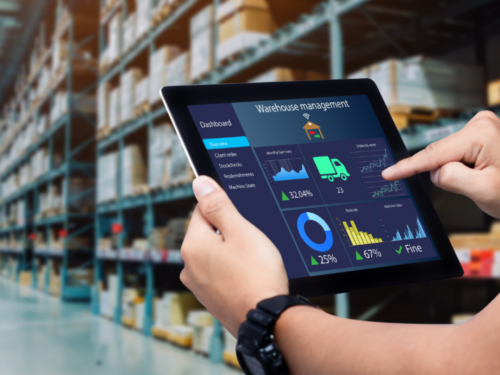 DevOps had a dream run in the year 2021 and is sure to continue it into 2022. According to ResearchandMarkets, the global DevOps market was estimated at $4.31 billion in 2020 and $5.11 billion in 2021. This value is expected to touch $12.21 billion in 2026, growing at a CAGR of 18.95% between 2021 and 2026.
DevOps had a dream run in the year 2021 and is sure to continue it into 2022. According to ResearchandMarkets, the global DevOps market was estimated at $4.31 billion in 2020 and $5.11 billion in 2021. This value is expected to touch $12.21 billion in 2026, growing at a CAGR of 18.95% between 2021 and 2026.
DevOps is innovating at a rapid pace. As such, organizations should proactively monitor technology changes and reinvent IT strategies accordingly. Here are the top DevOps predictions for 2022.
1) Distributed Cloud Environments
After hybrid and multi-cloud environments, distributed cloud networks are rapidly gaining popularity in recent times. A distributed cloud environment hosts backend services on different cloud networks in different geolocations while offering a single pane to monitor and manage the entire infrastructure as single cloud deployment. It allows you to customize more-performing and responsive service delivery for specific apps while following regulations of local governments. Distributed clouds bring high resilience, prevent data losses and service disruptions as your apps keep running even when servers in one region crash. It means you gain 99.99% uptime. Edge computing can be considered as an extension to distributed cloud networks.
Distributed clouds offer amazing benefits to all industries. For instance, autonomous vehicles can monitor and process sensor data on-board while sending engine and traffic data to the central cloud. Similarly, OTT platforms can leverage ‘Intelligent Caching’ wherein content in multiple formats is cached at different CDNs while transcoding tasks are done at the central cloud. That way, a newly released popular series can be seamlessly streamed to multiple mobile devices in the same region in real-time.
2) Serverless Architecture
Serverless architecture is a cloud-native architectural pattern that enables organizations to build and run applications without worrying about the provisioning and management of server resources in the infrastructure. The cloud provider takes care of the allocation and management of server and machine resources on-demand. The serverless architecture delivers accelerated innovation as apps can be deployed faster and better. Apps can be decomposed with clear observability as independent services that are event-based. As such, organizations can reduce costs and focus more on delivering better UX.
Serverless computing is rapidly innovating. Function as a Service (FaaS) is a new trend based on the serverless architecture that eliminates the need for complex infrastructure to deploy and execute micro-services apps. Another growing trend is hybrid and multi-cloud deployments that deliver enhanced productivity and are cost-effective. Serverless on Kubernetes is another trend that helps organizations run apps everywhere where Kubernetes runs. Kubernetes simplifies the job of developers and operations teams by delivering matured solutions powered by the serverless model. Serverless IoT is another model that brings high scalability, faster time to market while reducing overhead and operational costs in data-driven environments. It is also changing the way how data is secured in serverless environments.
3) DevSecOps
DevSecOps is a DevOps pattern that converts security into a shared responsibility across the application product lifecycle. Earlier, security was handled by an isolated team at the final stage of product development. However, in today’s DevOps era wherein apps are deployed in smaller cycles, security cannot wait for the end any longer. As such, DevSecOps integrates security and compliance into the CI/CD pipeline, making it everyone’s responsibility. The year 2022 is going to see more focus on shifting security towards the left of the CI/CD pipeline.
DevSecOps increases automation and policy-driven security protocols as QA teams perform automated testing to ensure that non-compliance and security vulnerabilities are efficiently combated across the product lifecycle. The design for failure philosophy is going to be reinvented as well.
4) AIOps and MLOps
Today, regardless of the size and nature, every organization is generating huge volumes of data every day. As such, traditional analytics solutions are inefficient in processing this data in real-time. For this reason, artificial intelligence and machine learning algorithms have become mainstream in recent times.
AI and ML data scientists normally work outside version control systems. Now, CI/CD and automatic infrastructure provisioning are applied to AIOps and MLOps as well. It means you can version your algorithms and identify how changes evolve and affect the environment. In case of an error, you can simply revert to an earlier version.
5) Infrastructure as Code (IaC)
Infrastructure as Code is another growing trend that will become mainstream in 2022. Infrastructure as Code (IaC) is a method of managing the complete IT infrastructure via configuration files. Since cloud-native architecture is becoming increasingly popular in recent times, IaC enables organizations to easily automate provisioning and management of IT resources on a cloud-native architecture by defining the runtime infrastructure in machine-readable files. IaC brings consistency in setup and configuration, enhances productivity, minimizes human errors, and increases operational efficiencies while optimizing costs.
GitOps is the new entrant in this space. Leveraging the IaC pattern and Git version control system, GitOps enables you to easily manage the underlying infrastructure as well as Kubernetes instances. When combined, organizations can build self-service and developer-centric infrastructure that offers speed, consistency and traceability.






